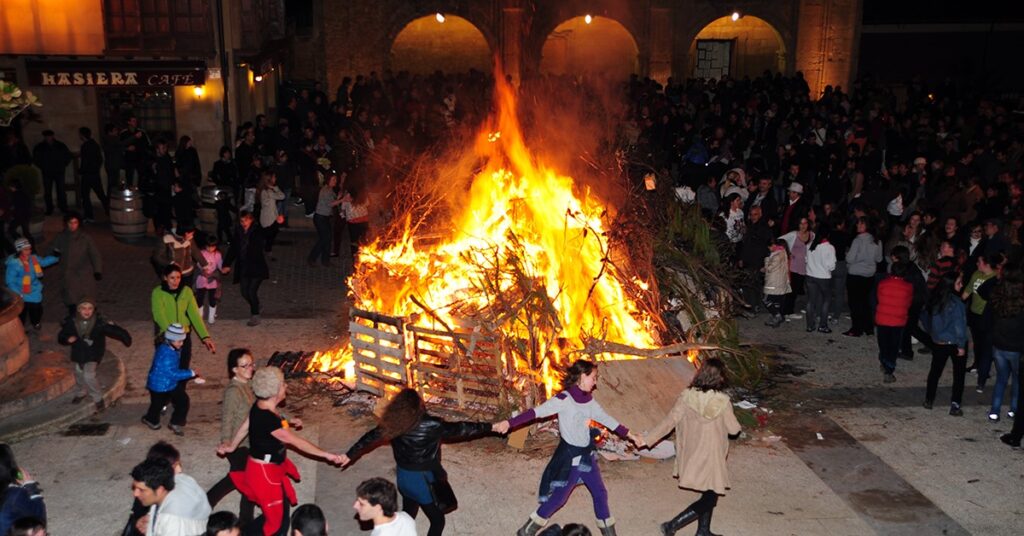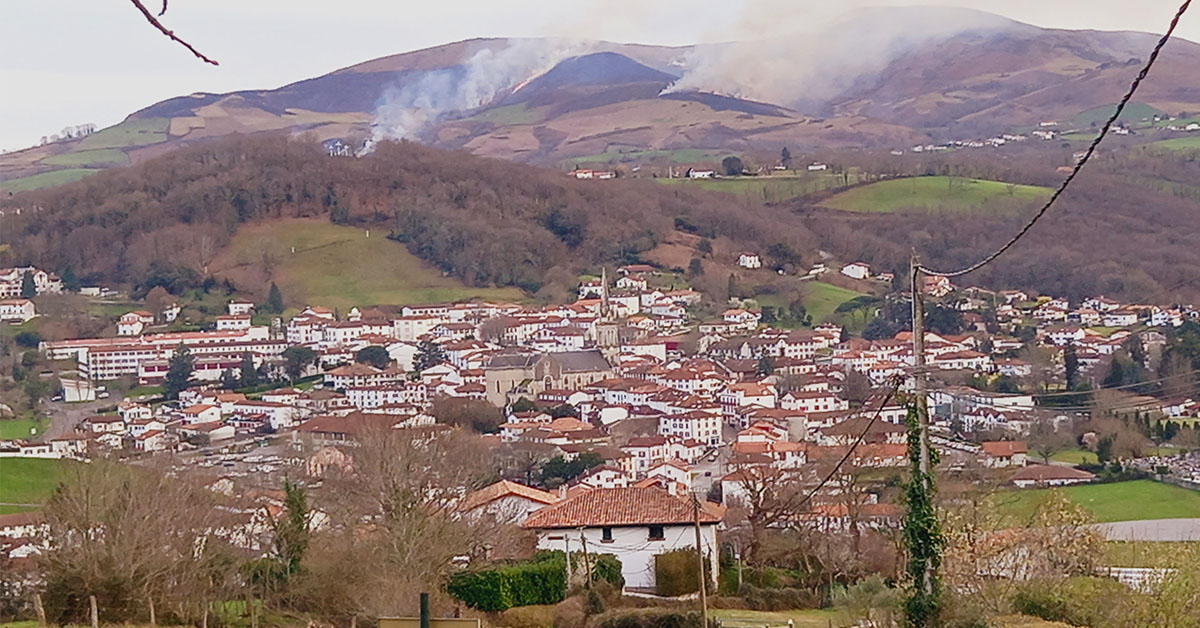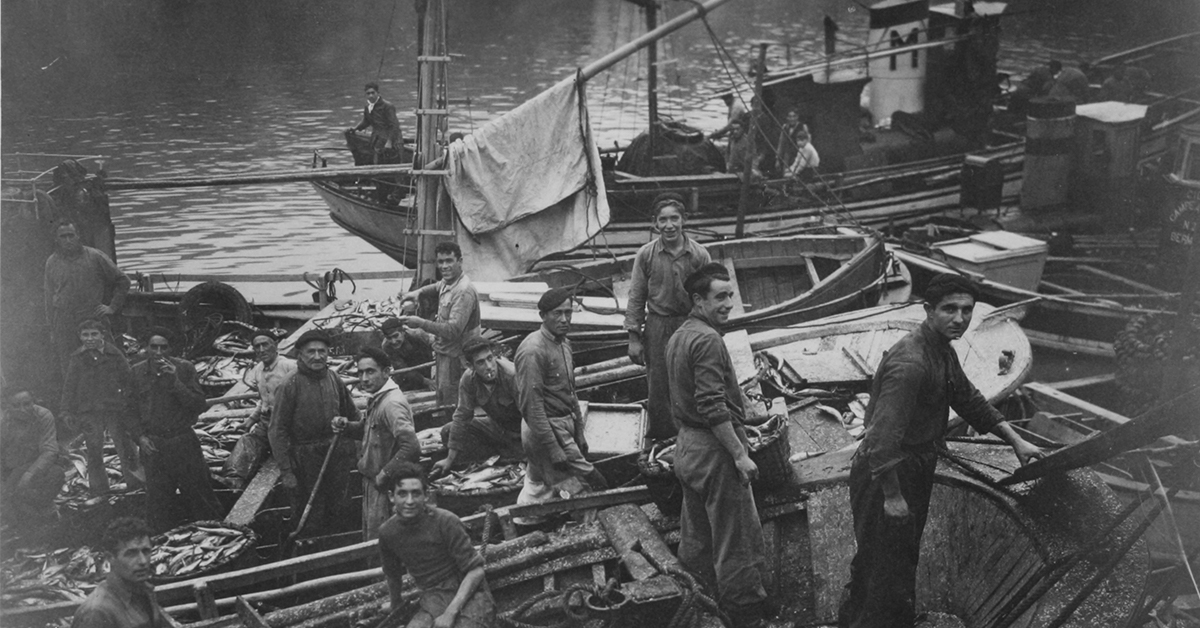Archives
If we are referring to the northern hemisphere and, specifically, winter, while the start of the astronomical season is set by the Solstice between 19 and 22 December, depending on the year, the meteorological season is based on whole months: December, January and February.
Anybody who visits us in winter will see the uplands of Iparralde (Northern Basque Country) ablaze. The fires are used to manage and clear the pastures and meadows for the livestock. Given the small size of the farms in Iparralde, they need to graze their animals on the surrounding uplands. Accordingly, the farmers care for and attend to the uplands in the same way as they do with their farmsteads. In general, they use fire to clear those areas which cannot be reached with machines.
The Feast Day of St. Simon and St. Jude, on 28 October, seemed to have been the watershed between summer and winter for our forebears. Indeed, the saying goes “St. Simon and St. Jude, summer has ended and winter is here”.
Later and based on that idea, Gabriel Aresti wrote a poem, that Xabier Lete popularised and which would make him famous.

Slopes of Eneabe. Ubide (Bizkaia), December 1996. José Ignacio García Muñoz. Labayru Fundazioa Photographic Archive.
Spring-summer transhumance and transterminance, both implying movement of flocks to high pastures, were defined and dealt with in a previous post published on 17 May 2019.
With winter approaching, herds are brought down from the highlands, since adverse weather hamper the stay. And as the vegetative growth of grass stops or slows down due to cold winter temperatures, and there is not enough pasture in the lower valleys, herds are moved towards coastal areas, where milder temperatures prevail, or to warmer innermost regions of the country, such as the Royal Bardenas, frequented by most Pyrenean flocks, or even as far as Ebro Valley. (more…)








